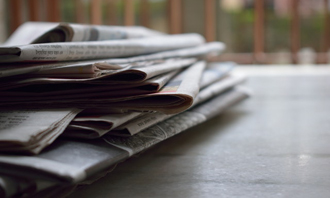How do I write a Press Release? Your easy-to-follow template

Press Releases - possibly better to call them Media Releases these days, as they're used across all kinds of communication format. Some say these little nuggets are a thing of the past. They're wrong. Look at Press Releases as free advertising - but without the dubious odour of commercialism. They're a great way to communicate a piece of news about your business - expansion - a new appointment - an exciting contract - an acquisition - a major investment. Press Releases are also a vital tool for putting a positive spin on bad news. Whatever the function of your Press Release, you need to follow a pattern.
Your Press Release Template - a few rules
- Don't use your Press Release to 'sell'. They aren't adverts. Their role is to explain.
- When you send out your Press Release to journalists, make sure your email has an appealing subject line. Don't label it 'Press Release'. It'll go straight into junk. Think of a relevant subject line that will catch the journalist's eye. How about - '17 new jobs as Northampton widget company makes major acquisition'?
- Similarly, make the headline of the Press Release catchy. 'Northampton widget company expanding' won't cut it.
- Don't, please, I beg you, don't tell readers how excited you are! 'The Directors of NorWidge are thrilled to announce ...'. I'll let you into a secret. Neither the journalist you're sending this to, nor his readers give a monkey's doo-da about how excited you or your directors are. Instead write about the impact your news will have on your clients, your employees, or the community.
- Keep your Press Release brief and relevant - no clever, long sentences; no self-indulgent meanderings.
- Always write in the third person - he, she, they - not I, we.
- Use this template structure and you won't go far wrong -
DATE
HEADLINE
Make your headline a catchy, strong, intriguing summary. Spend as much time on the headline as the rest of the Press Release. This will be time well spent. Ensure you bold it.
LEAD
The lead paragraph is the key part of your media release. Make it punchy. Include your story 'hook'. Make sure it includes -
who, what, when, where, why and how.
BODY
The next paragraph should expand on the lead and be the point where you start telling your story. Use a new paragraph for each point. Start with the most important and work your way through in order of priority of importance - short sentences and paragraphs with lively, active language. Always write in the third person.
Use quotes to make your writing more interesting but remember all opinions must be attributed to a particular person or the organisation. The media won't use newsworthy assertions unless they're properly sourced.
END
The last paragraph is the least important. It's a brief round-up of the main message and can include background information about your company and your services.
Always finish the media release with -ends- so the journalist knows it's finished.
CONTACT
Make sure you include contact information, like this -
For further media information contact - Contact Name/Email/Phone number
BOILER PLATE (ABOUT YOU AND YOUR BUSINESS)
Include a boilerplate at the bottom of your media release - a one-paragraph summary of background information about yourself and your business. This won't be used in the published Press release but will give the journalist an overview.
More Copywriting Tips?
Is this blog helpful? Well, you reached the end, so it must have something going for it. The next one's going to be so much better.
To keep up, register here for the Copywriter Pro weekly newsletter.
Then you won't miss a single blog.
And if you do sign up ... you'll receive a free infographic featuring my top 15 copywriting tips.
Want to chat about your copywriting issues? Give me a call - +44(0)7703 472207.
Or you could book a discovery Zoom chat below.
Till the next time ...


